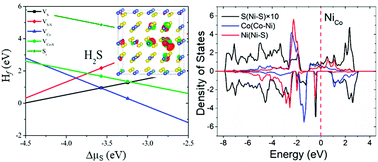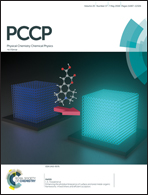Defects and impurities induced structural and electronic changes in pyrite CoS2: first principles studies
Abstract
Cobalt pyrite (CoS2) and related materials are attracting much attention due to their potential use in renewable energy applications. In this work, first-principles studies were performed to investigate the effects of various neutral defects and ion dopants on the structural, energetic, magnetic and electronic properties of the bulk CoS2. Our theoretical results show that the concentrations of single cobalt (VCo) and sulfur (VS) vacancies in CoS2 samples can be high under S-rich and S-poor conditions, respectively. Although the single vacancies induce defect states near the gap edge, they are still half-metallic. We find that the substitution of one S with the O atom does not obviously change the structural, magnetic and electronic features near the Fermi level of the system. Most transition metal impurities (MnCo, FeCo, and MoCo) and Group IV and V anion impurities (CS, SiS, NS, PS, and AsS) create impurity states that are deep and/or near the gap edge. However, NiCo and Group VII elements (FS, ClS, and BrS) cause very localized gap states close to the Fermi level in the minority spin channel, which may modify their electrochemical performances. Our extensive calculations provide instructive information for the design and optimization of CoS2-related energy materials.

- This article is part of the themed collection: 2018 PCCP HOT Articles


 Please wait while we load your content...
Please wait while we load your content...